When pitted against the multitude of various cultures that make up the North American melting pot, Amish history is often overlooked.
Schoolchildren aren’t taught about Amish history in great detail, perhaps because the Amish aren’t a major player in the political landscape, but it’s especially unique in that, when looking at the past, we learn just as much about the present day Amish and, indeed, the future.
Centuries-old traditions are so entrenched in Amish culture that many facets of their way of life have been preserved; almost like a living, breathing time capsule.
Sadly, not many people are aware of the historical significance of this tight-knit community. Their relative isolation, away from modern city centers, may be another cause for the general reluctance to delve deeper into the details of this hard-working, fast-growing community.
We aim to change that by exploring the history and culture of the Amish in our guide.
What this article covers:
- Where Are Amish People from?
- Amish Communities in the US
- Are there Still Amish Communities in Europe?
- Interesting Ways that Amish People Differ from Outsiders
- Amish History FAQs
Where Are Amish People from?

The first Amish people arrived in America from the Palatinate (a region in Germany) in the 1700s. They were members of a strict Mennonite sect, founded by Swiss preacher Jakob Amman. The name “Amish” is derived from his name.
You may be wondering, are all Amish people German? Technically, no, they aren’t.
They were later joined by the Swiss Amish, who originated in Switzerland, Alsace, and the Montbéliard region, coming to the US in the mid-1800s. However, much of their culture stems from their Swiss-German roots.
So, what language do the Amish speak? It’s called Pennsylvania Dutch, a language derived from German and unique to the Amish. They also learn English at school, allowing them to communicate with the outside world.
The religion of the Amish
A lack of knowledge about their society has led many outsiders to wonder if the Amish are a cult or religion. They are, in fact, a devout Christian sect. They believe that submission to the authority of the church is of paramount importance.
Amish beliefs about death are similar to other Christian congregations, and they also hold funerals and visit cemeteries in remembrance of loved ones. However, they don’t pray for deceased souls, a practice that’s common in some Christain denominations.

The deceased person is believed to have gone to be with God. They are buried three days after death, in a simple coffin. Grave plots are not adorned as in other faiths and instead are marked by simple tombstones without flowers or other decorative elements.
Morals And Values
Amish law forbids violence and any sport or activity that involves aggression. Military service is also forbidden, as it involves violence as acts of war. Amish people are therefore pacifists and conscientious objectors.
They prefer to forgive acts of violence against them, rather than engage in any activity that seeks restitution. As such, there is seldom any kind of Amish punishment. They will, however, cooperate with law enforcement, and will not prevent them from carrying out their duties in an investigation.
The Amish firmly believe that the way to overcome injustice is by doing more good. They strive for harmony in everything they do, even frowning upon competition because of the inequality it may encourage.
History and Culture of Amish
The history and culture of the Amish people are very much tied to their faith. Formerly known solely as the Old Order Amish, they are descended mostly from traditional Anabaptist Christian congregations.
In response to the Reformation in Europe in the 16th century, the Anabaptists splintered into 3 communities: The Brethren, the Mennonites, and the Amish. Of these three, the Amish were the most conservative. The first group of Amish settlers arrived in Lancaster County, Pennsylvania, in the early 18th century.
They have since branched out into the four types of Amish: the Old Order, the New Order, the Beachy Amish, and the Amish Mennonites.
Customs
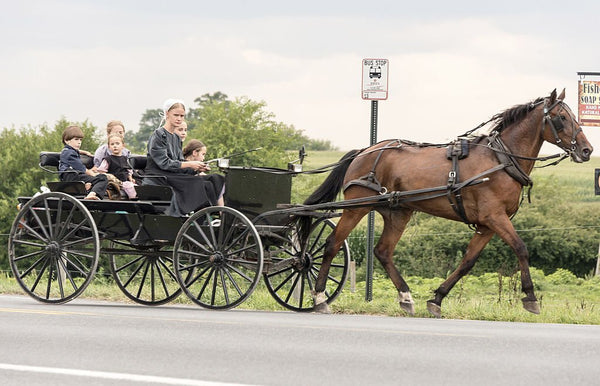
The Amish place great importance on humility, so modesty is a large factor in their way of dress as well. Shunning modern conveniences, which are seen as distractions, Amish people continue to live a simple life.
Traditional crafts and trades are still practiced, and community members rely on these as a source of income. Amish communities rely mostly on horse-and-buggy transport, and this is perhaps one of the most well-known Amish traditions and customs.
In keeping with tradition, Amish food is simple but nutritious, centered around potatoes, noodles, meat, and vegetables.
Pastimes
Contrary to popular belief, Amish people don’t spend their days reading the Bible. While this does play a key role in their activities, they also enjoy a variety of leisure activities.
Pastimes include visiting other community members, playing board games (but not cards, which are forbidden), singing hymns, and reading. But many community members also enjoy sports.
Work
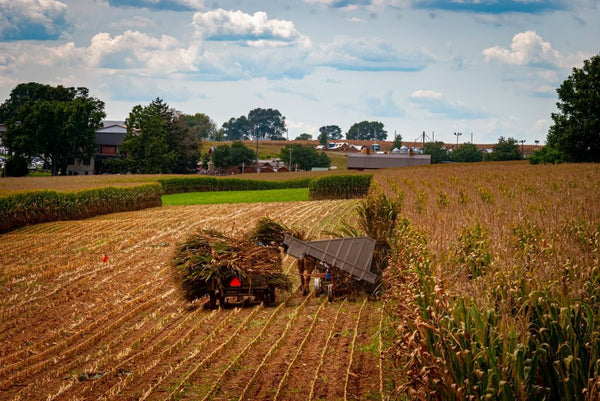
While farming was the main source of income in Amish communities for many years, other ways to earn a living are also popular. Carpentry, baking, quilting, and basket making are some of these income streams.
As not all Amish communities have such a conservative view and strict prohibition on mixing with outsiders, Amish companies sometimes operate in non-Amish areas and use low-tech machinery.
More orthodox communities prefer to remain true to their traditional crafts with the use of simple hand tools. But a decision was made to allow community members to use diesel generators, instead of connecting to the power grid. This was borne out of necessity, as without any power, food and milk could not be kept cold and fresh. This decision also made many types of work easier for Amish people.
Some Amish communities also use solar panels, seeing this form of electricity as provided by God through the sun.
Amish Baskets – A Traditional Craft
Amish handwoven baskets are especially prized outside of Amish communities, for their traditional charm, high quality, and authenticity. It’s this commitment to quality that we offer with every item for sale at Amish Baskets.
Whether you need storage baskets for shelves in the kitchen, a picnic basket for family outings, or a breakfast-in-bed tray for lazy Sunday mornings, we’ve got you covered. You not only get high-quality homewares at competitive prices, but you also get your own little piece of history.
Amish Communities in the US
Most of you have heard the word “Amish” before, but who are the Amish people? Ninety-eight percent of the Amish people live in the US, while some are found in Canada. They emigrated to North America to flee from religious persecution on the continent of Europe.
Most Amish families settled in Pennsylvania, and to date, the largest Amish settlement was in Lancaster County, Pennsylvania. Other main centers of Amish people are Indiana, Minnesota, and Ohio. There are Amish communities in other states as well, though, and the total Amish population in the US is over 360,000.
Amish Types
The Amish people, while they are usually classified as one group, are also divided into sub-groups or sects. Some of these different Amish groups are more conservative than others. The Pennsylvania Amish community is the oldest and largest in the US.
Amish Sects and Communities
Beachy Amish, New Order, Old Order, and Swartzentruber Amish are examples of these groups. These sects and communities vary in their degree of strictness in their Ordnung.
The Ordnung is the name for the unwritten set of rules and regulations, passed on from generation to generation, that govern everyday Amish life.
Are there Still Amish Communities in Europe?
The Amish people trace their origins to Europe, but any remaining Amish communities who didn’t flee persecution eventually assimilated into local Mennonite congregations.

As such, there are no longer distinctly Amish communities in Europe.
The Amish population has enjoyed steady growth due to high birth rates. This is partly because they see large families as a blessing from God but also because large families contribute to the workforce’s need for farm labor in their communities.
Why Did they Choose to Settle in America?
Religious persecution drove the Amish communities to flee Europe in search of a more tolerant home. But why did they not go to other parts of the world? What made them choose to settle in America?
The continent of North America, a land of new possibilities for refugees, offered hope and freedom to many groups of people from all over the world.
The Amish were predominantly farmers, and so their reasons for choosing to migrate to America were two-fold. The New World promised both freedoms from persecution and plenty of arable lands. Thus, America was the ideal destination for these religious refugees.
Interaction with Non-Amish Communities

Interaction with non-Amish communities is generally limited to work or, in some cases, medical emergencies. But that doesn’t mean that the Amish are completely severed from the outside world. Many communities have basic computers and mobile phones, which they use for work purposes.
Most members don’t feel the need for computers in the home and engaging in social media is not a common pastime amongst the youth as it is elsewhere. Even in less conservative communities, there are strict rules governing the use of such devices.
Just as with other low-level technological instruments, they’re viewed purely for their practicality and are not to be used indiscriminately.
Interesting Ways that Amish People Differ from Outsiders
Amish people work, go to school, go to church, pay taxes, and do most of the things that other people do. They simply live their lives without all of the technology that is such a prevalent part of western culture.
There are, however, a few differences between Amish and non-Amish people and some of these may surprise you. Most of these differences are due to their religious beliefs and traditional customs.
They Have No Insurance
The Amish believe in God’s Will (Gottes Wille) and thus don’t take out insurance policies, nor do they have medical insurance. Members of the community support each other should a need arise for medical procedures that a particular family cannot afford.
They Dress Modestly
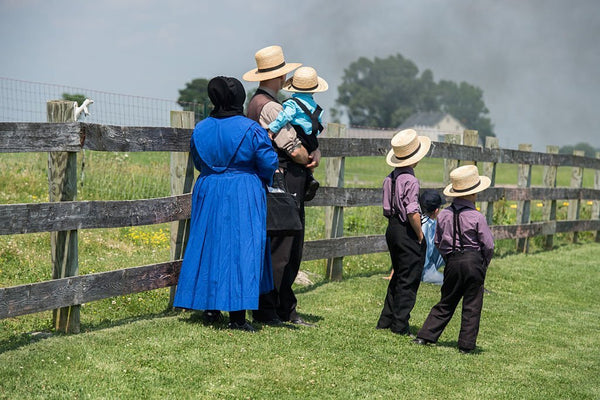
Amish women wear long dresses or skirts that aren’t tight or revealing, and dresses usually have longer sleeves. Men wear long pants and shirts with straw hats. Colored clothing is allowed, but very bright or printed items aren’t worn.
This simple style of dress follows the example of modest attire espoused by the Bible. The degree of conservatism amongst Amish groups may affect the style of clothing, but all communities believe in a conservative and simple dressing.
They Don’t Have Fire Alarms
Once again, God’s Will plays a role here. As the Amish believe that a fire would be the result of God’s Will, they don’t see the need for fire or smoke alarms.
They Don’t Have Secondary Education Past 9th Grade
The Amish believe that this level of education is sufficient for meeting the demands of their simpler lifestyle. Therefore, high school and college education aren’t a part of Amish life. Trades are taught by father to son, and crafts by mother to daughter.
No Proof of Birth or Identification
Social security cards and birth certificates aren’t used in Amish communities. These documents aren’t needed within the community, and Amish babies are usually born at home.
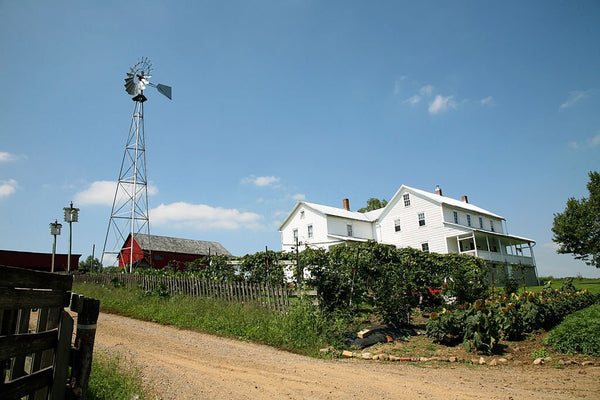
Conclusion
Amish history may not be as familiar to some of you as that of other cultural groups. We hope we’ve encouraged a newfound interest in the culture and traditions of this inspiringly devout community.
Every Amish Baskets product represents a lasting connection to the land and tradition, as the Amish intended.
Because of their unwavering dedication to preserving the family unit, the Amish have battled up-hill against an ever-changing world to maintain the strength and viability of their way of life. So, in a way, looking at Amish history is a little like looking at what the future of their prayers looks like.
We hope you’re just as eager to help them make those prayers a reality.
Amish History FAQs
What Are the Amish Known for?
Amish people are known for living separately from modern city life and its electrical conveniences. They choose to live a simple, uncomplicated life instead, focusing on their faith and their families.
What Ethnicity Are Amish People?
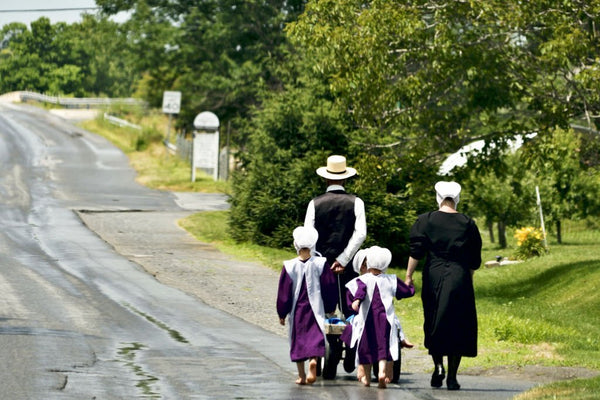
Amish people are Caucasians and Europeans, specifically of Swiss-German ancestry. This can be seen in their cultural traditions, and the language is still spoken by community members to this day. Amish families intermarry within the community and thus have an identifiable ethnicity that hasn’t changed.
Who Was the First Amish Person?
The first Amish families arrived in the New World in the mid-1700s. The Northkill Amish Settlement, established in 1740 in Berks County, Pennsylvania, was the first identifiable Amish community on record in America.
Did you find our blog helpful? Then consider checking:

